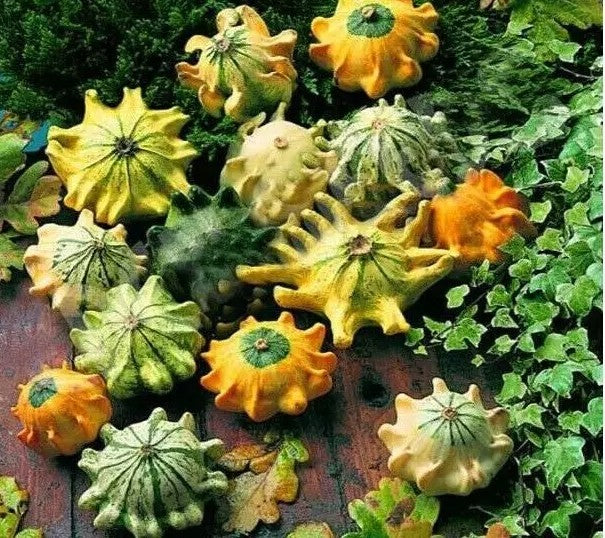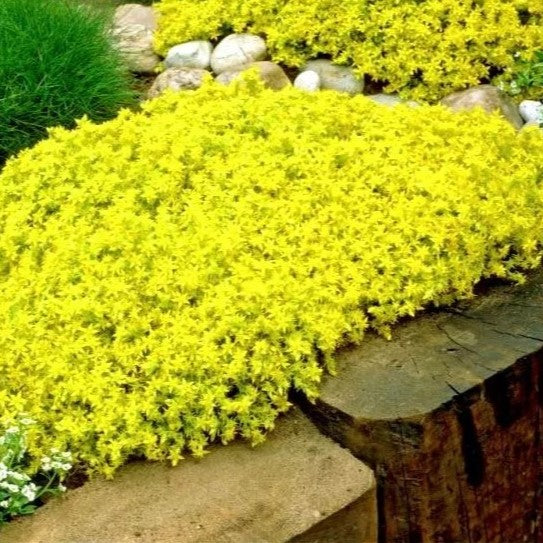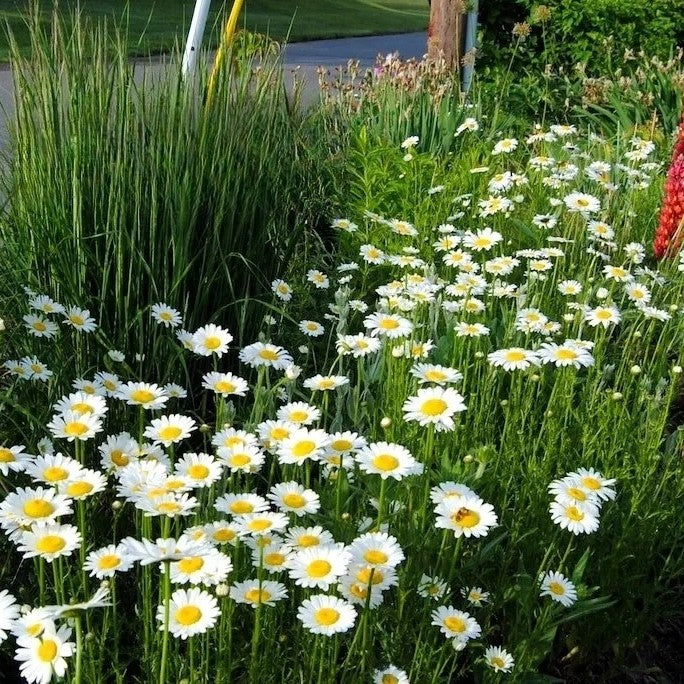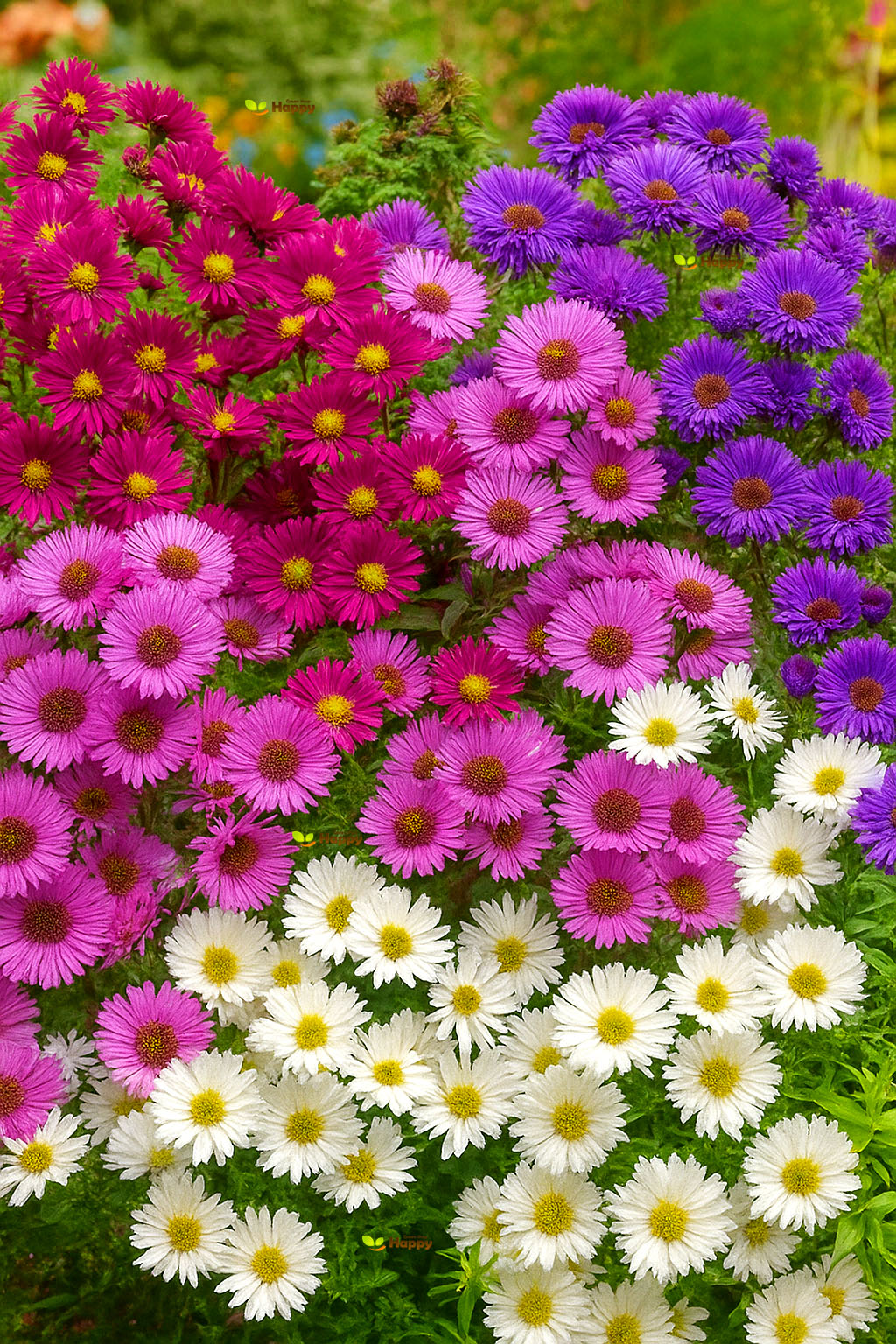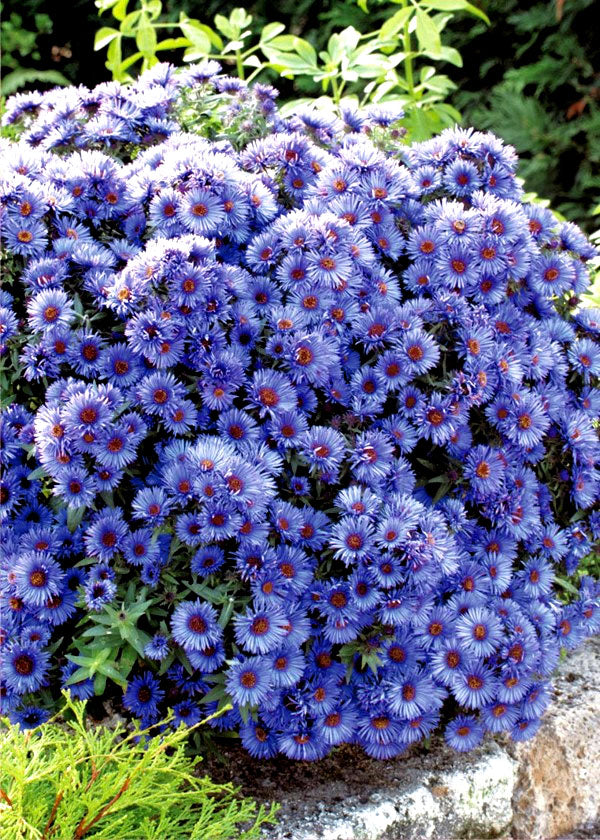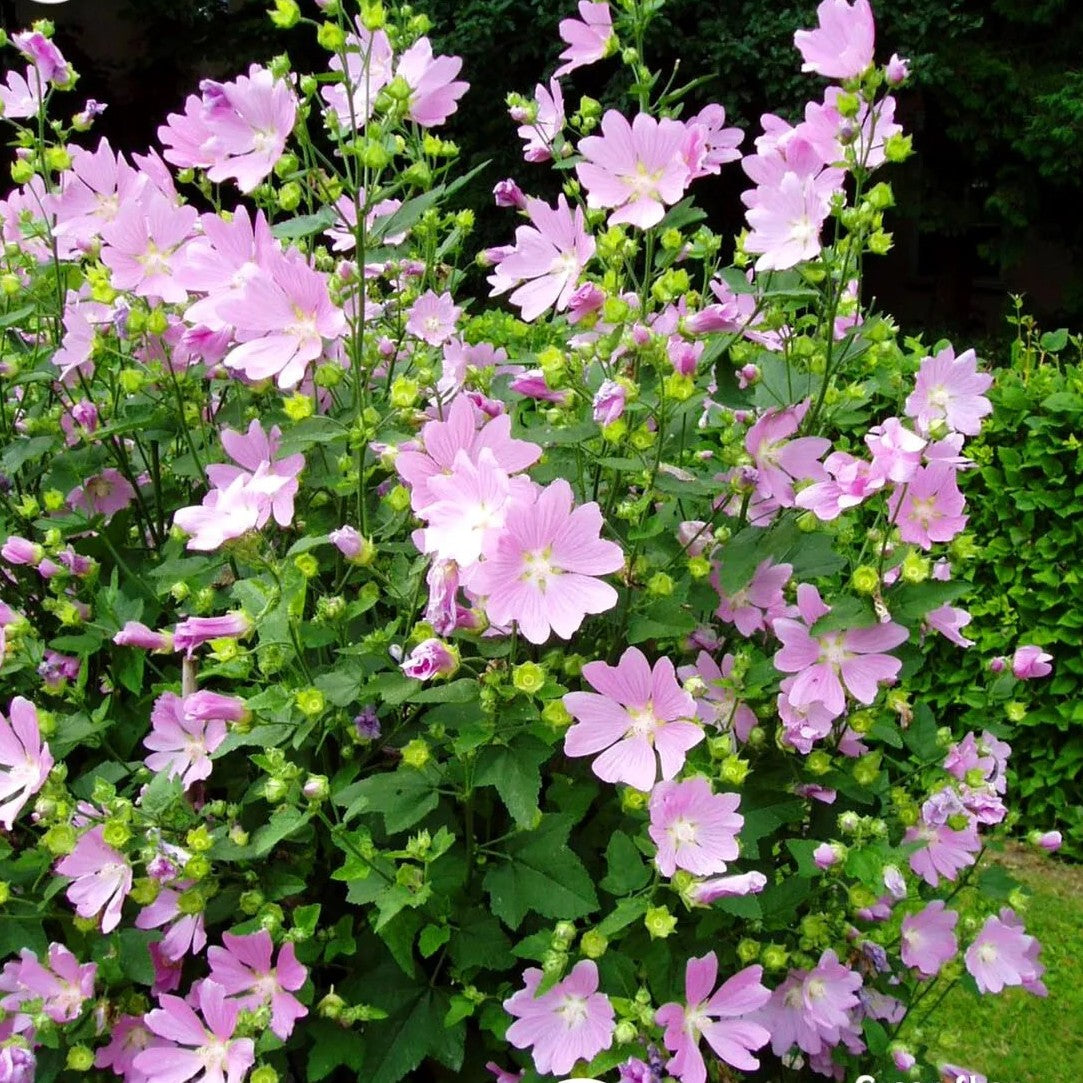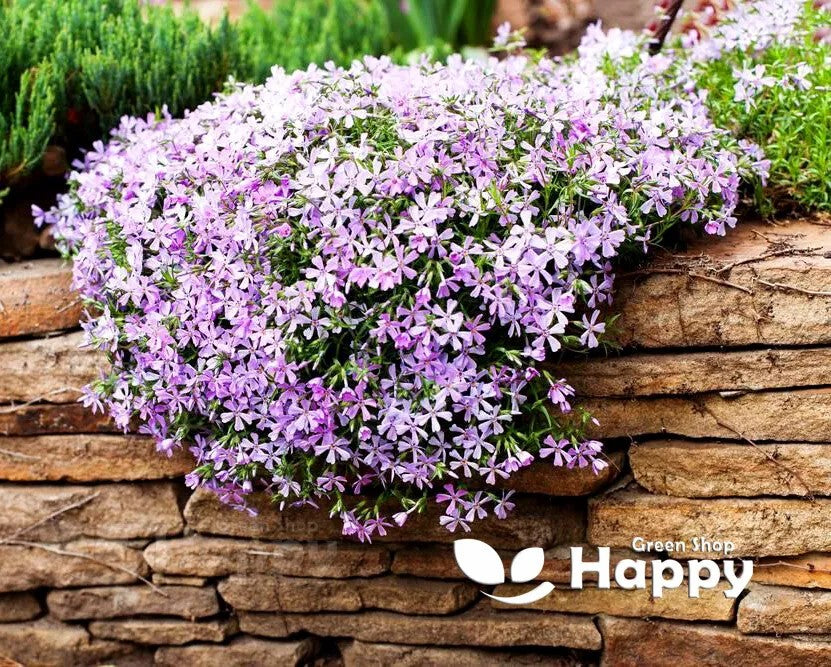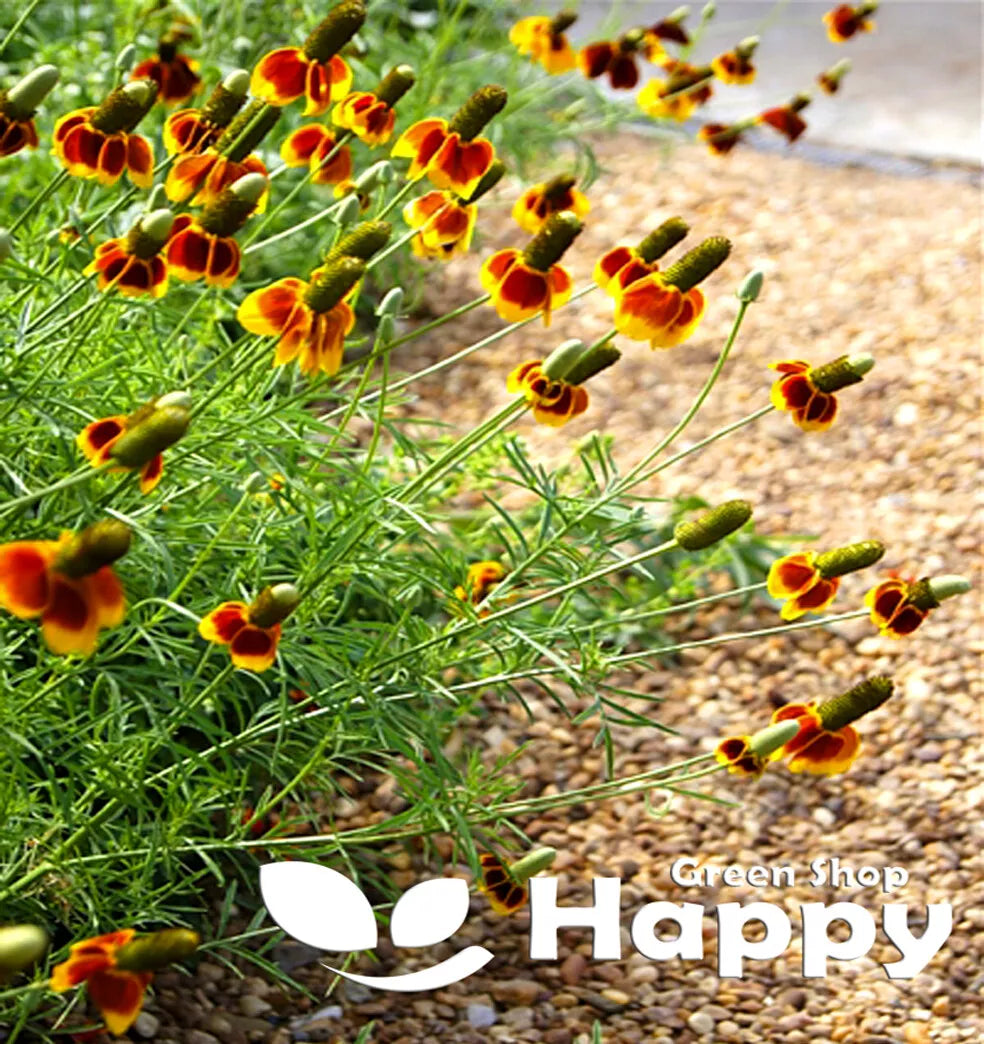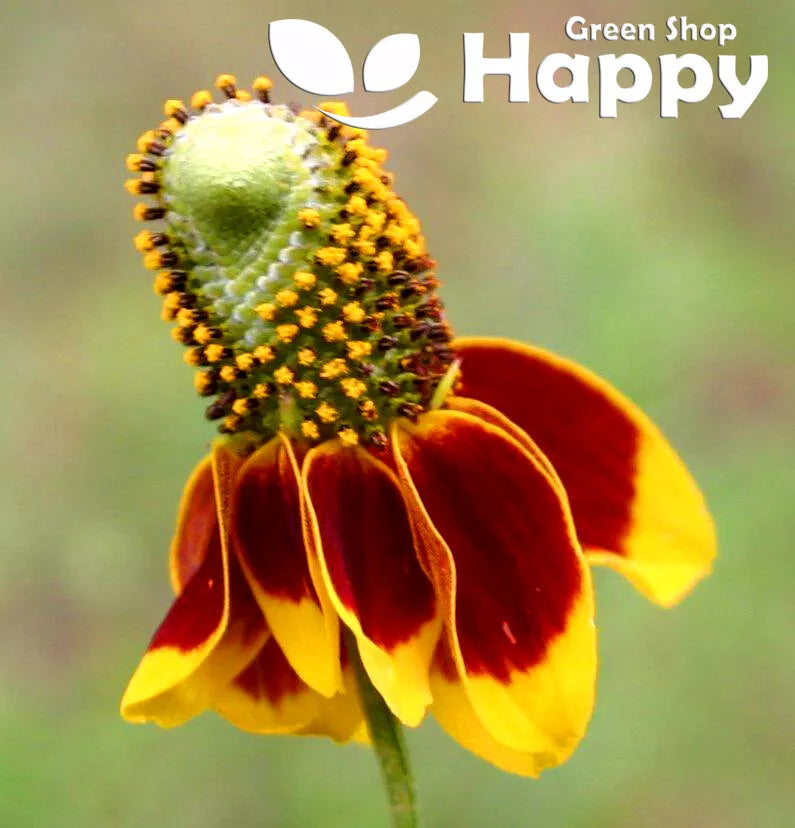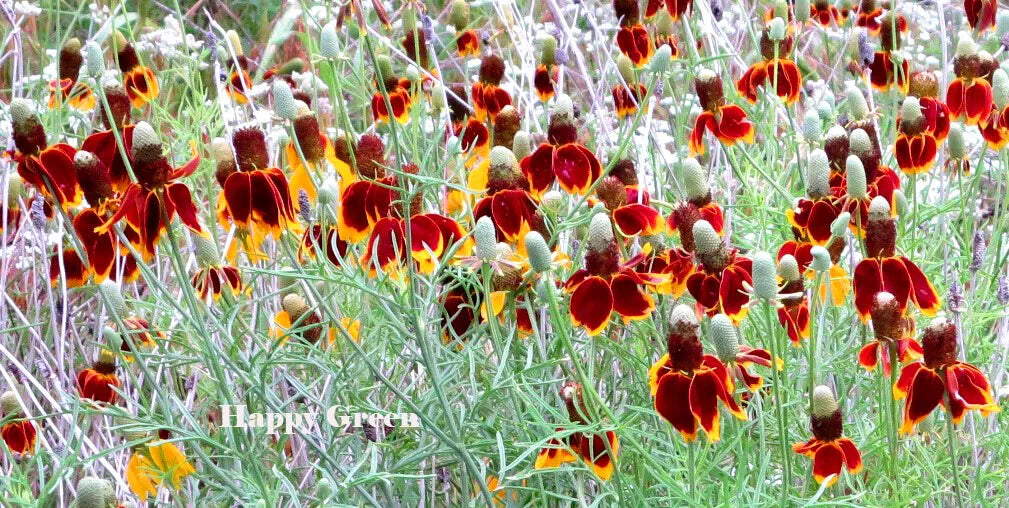Sort by:
121 products
121 products
Ox-Eye Daisy 'May Queen' Seeds (Chrysanthemum leucanthemum)
The Ox-Eye Daisy ‘May Queen’ (Chrysanthemum leucanthemum) is a charming, classic wildflower with cheerful white petals and sunny yellow centers. This hardy perennial is valued for its reliability, low maintenance, and ability to naturalize in meadows, borders, and wildlife gardens. Blooming in late spring through summer, it attracts bees, butterflies, and other pollinators.
What Makes It Special
-
Large, daisy-like blooms with a natural cottage garden look
-
Hardy perennial that self-seeds and spreads easily
-
Perfect for wildflower meadows and pollinator-friendly gardens
Key Features
-
Botanical name: Chrysanthemum leucanthemum
-
Perennial wildflower
-
Height: 60–80 cm
-
Spread: 30–40 cm
-
Flowering: May–July
Ideal For
-
Wildflower meadows and naturalizing
-
Cottage and wildlife gardens
-
Pollinator-friendly planting
Sowing
-
Sow outdoors: March–May or August–October, directly where they are to flower
-
Germination: 14–28 days
-
Thin seedlings to 30 cm apart
-
Thrives in full sun and well-drained soil
New York Aster ‘Novi-Belgii’ Seeds (Symphyotrichum novi-belgii)
Enhance your late-season garden with New York Aster ‘Novi-Belgii’ (Symphyotrichum novi-belgii). This hardy perennial produces dense clusters of violet-blue daisy-like flowers with golden centers in late summer and autumn, bringing vibrant color to borders, meadows, and cutting gardens. Easy to grow and long-flowering, it attracts pollinators and adds a classic cottage garden charm.
How to Grow
-
Sow seeds indoors 6–8 weeks before the last frost or directly outdoors after frost risk has passed.
-
Use well-drained soil in full sun to partial shade.
-
Lightly cover seeds with soil and keep moist until germination (14–21 days).
-
Thin seedlings to 30–40 cm apart once established.
-
Mulch around plants to retain moisture and support healthy growth.
-
Cut back after flowering to maintain plant vigor.
Key Features
-
Violet-blue, daisy-like flowers with golden centers
-
Hardy perennial, long-flowering and easy to grow
-
Ideal for borders, meadows, and cutting gardens
-
Attracts bees, butterflies, and other pollinators
-
Adds vibrant late-season color to garden beds
Ideal For
-
Flower borders and cottage gardens
-
Wildflower meadows and naturalized areas
-
Cutting gardens for bouquets
-
Pollinator-friendly landscapes
Sowing
-
Best time: 6–8 weeks before last frost indoors or after frost outdoors
-
Germination: 14–21 days
-
Sow thinly, cover lightly, and keep soil moist
-
Prefers full sun to partial shade and well-drained soil
Quick Tip
-
For extended blooms, sow successive batches or cut flowers regularly to encourage new growth.
New England Aster ‘Sky Blue’ Seeds (Symphyotrichum novae-angliae)
Brighten your late-season garden with New England Aster ‘Sky Blue’ (Symphyotrichum novae-angliae). This hardy perennial produces masses of sky-blue daisy-like flowers in late summer and autumn, creating a stunning display in borders, meadows, and cutting gardens. Easy to grow and long-flowering, it attracts pollinators and adds vibrant color when many other plants have finished blooming.
How to Grow
-
Sow seeds indoors 6–8 weeks before the last frost or directly outdoors after frost risk has passed.
-
Use well-drained soil in full sun to partial shade.
-
Lightly cover seeds with soil and keep moist until germination (14–21 days).
-
Thin seedlings to 30–40 cm apart once established.
-
Mulch around plants to retain moisture and support healthy growth.
-
Cut back after flowering to maintain plant vigor.
Key Features
-
Sky-blue, daisy-like flowers in late summer and autumn
-
Hardy perennial, long-flowering and easy to grow
-
Ideal for borders, meadows, and cutting gardens
-
Attracts bees, butterflies, and other pollinators
-
Adds vibrant late-season color to garden beds
Ideal For
-
Flower borders and cottage gardens
-
Wildflower meadows and naturalized areas
-
Cutting gardens for bouquets
-
Pollinator-friendly landscapes
Sowing
-
Best time: 6–8 weeks before last frost indoors or after frost outdoors
-
Germination: 14–21 days
-
Sow thinly, cover lightly, and keep soil moist
-
Prefers full sun to partial shade and well-drained soil
Quick Tip
-
For extended blooms, sow successive batches or cut flowers regularly to encourage new growth.
Musk Mallow – Seeds (Malva moschata)
Musk Mallow (Malva moschata) is a charming perennial known for its delicate, saucer-shaped flowers in shades of soft pink or white. Blooming from early summer to autumn, it adds natural cottage garden charm to borders, meadows, and wildflower plantings. Hardy and low-maintenance, this mallow thrives in well-drained soil and attracts bees, butterflies, and other pollinators, making it both ornamental and ecologically beneficial.
Why Grow "Musk Mallow"
-
Delicate pink or white saucer-shaped blooms
-
Long flowering season from early summer to autumn
-
Hardy, low-maintenance, and resilient
-
Pollinator-friendly plant
Key Features
-
Type: Perennial (Malva moschata)
-
Height: 60–90 cm
-
Flowering: Early summer to autumn
-
Position: Full sun or partial shade
-
Uses: Borders, meadows, cottage gardens, wildlife gardens
Ideal For
-
Naturalistic and cottage-style planting
-
Pollinator-friendly gardens
-
Borders, meadows, and wildflower plantings
-
Low-maintenance perennial displays
Sowing & Growing
-
Sow indoors: February–April in trays or pots
-
Sow outdoors: April–June directly in soil
-
Germination: 14–21 days at 15–20°C
-
Space seedlings: 30–40 cm apart
-
Prefers well-drained soil in full sun or partial shade
Mountain Phlox – Seeds (Linanthus grandiflorus)
Bring a splash of wildflower beauty to your garden with Mountain Phlox (Linanthus grandiflorus). This charming annual produces clusters of dainty, star-shaped flowers in shades of lavender, pink, and white, creating a soft carpet of color. Native to western North America, Mountain Phlox is well-suited to rock gardens, borders, and wildflower meadows, thriving in sunny, well-drained spots.
Why Grow Mountain Phlox?
-
Dainty star-shaped blooms in pastel shades
-
Long-lasting summer color
-
Attracts bees, butterflies, and pollinators
-
Excellent for rock gardens and naturalized plantings
-
Easy to grow and low maintenance
Key Features
-
Type: Hardy annual
-
Height: 20–40 cm
-
Flowering: June–August
-
Position: Full sun; light, well-drained soil
-
Uses: Rock gardens, borders, wildflower mixes, containers
Ideal For
-
Adding soft pastel tones to summer displays
-
Pollinator-friendly gardens
-
Drought-tolerant, low-maintenance areas
-
Naturalistic or meadow-style planting
Sowing & Growing
-
Sow outdoors: March–May directly where they are to flower
-
Cover seeds lightly with soil, keep moist until germination
-
Germination: 14–21 days at 15–20°C
-
Thin seedlings to 15–20 cm apart
-
Flowers in summer the same year
Mexican Sunflower Mix – Seeds (Tithonia speciosa)
Mexican Sunflower Mix (Tithonia speciosa) brings bold, fiery blooms in shades of orange, red, and yellow to your garden. Fast-growing and easy to cultivate, these sun-loving annuals attract butterflies and bees, creating a lively and vibrant display throughout summer and autumn. Perfect for borders, wildflower meadows, or pollinator gardens.
Why Grow "Mexican Sunflower Mix"
-
Striking, bright orange-red flowers
-
Long-flowering annual for summer and autumn
-
Attracts butterflies, bees, and other pollinators
-
Easy to grow in sunny, well-drained locations
Key Features
-
Type: Annual (Tithonia speciosa)
-
Height: 90–150 cm
-
Flowering: July–October
-
Position: Full sun
-
Uses: Borders, wildflower gardens, pollinator-friendly plantings, cut flowers
Ideal For
-
Pollinator gardens and wildlife-friendly planting
-
Summer borders and vibrant bedding
-
Wildflower meadows
-
Cut flower arrangements
Sowing & Growing
-
Sow outdoors: April–May after last frost
-
Germination: 10–20 days at 18–22°C
-
Thin seedlings to 50 cm apart
-
Prefers full sun and fertile, well-drained soil
-
Deadhead to prolong flowering
Mexican Hat – Seeds (Ratibida columnifera)
Mexican Hat (Ratibida columnifera) is a striking perennial wildflower named for its sombrero-shaped blooms. From summer into autumn, it produces vibrant yellow and red petals surrounding a tall, central cone. Hardy and drought-tolerant, it thrives in poor soils and full sun, making it perfect for naturalistic plantings, meadows, and wildlife gardens. Its long-lasting blooms attract bees, butterflies, and other pollinators, adding color and biodiversity to your outdoor space.
Why Grow "Mexican Hat"
-
Unique sombrero-shaped flowers in yellow and red
-
Long flowering from summer to autumn
-
Drought-tolerant and thrives in poor soils
-
Attracts bees, butterflies, and other pollinators
Key Features
-
Type: Perennial (Ratibida columnifera)
-
Height: 60–90 cm
-
Flowering: Summer to autumn
-
Position: Full sun
-
Uses: Meadows, wildlife gardens, borders, naturalistic plantings
Ideal For
-
Wildflower meadows and prairie-style gardens
-
Pollinator-friendly planting
-
Low-maintenance and drought-tolerant gardens
-
Adding unique blooms to borders and beds
Sowing & Growing
-
Sow indoors: 6–8 weeks before last frost
-
Sow outdoors: After frost danger has passed
-
Germination: 14–21 days
-
Space seedlings: 25–30 cm apart
-
Prefers well-drained, sandy or poor soils in full sun
Meadow Sage – Seeds (Salvia pratensis)
Meadow Sage (Salvia pratensis) is a hardy perennial wildflower with elegant spikes of deep violet-blue blooms. Highly attractive to bees, butterflies, and other beneficial insects, it adds natural beauty and biodiversity to any garden. Long-flowering and low-maintenance, this sage is ideal for wild meadows, borders, and pollinator-friendly plantings.
Why Grow Meadow Sage?
-
Striking violet-blue flower spikes
-
Attracts bees, butterflies, and pollinators
-
Hardy, drought-tolerant perennial
-
Low-maintenance and long-lasting
Key Features
-
Type: Perennial
-
Height: 40–70 cm
-
Spread: 30–40 cm
-
Flowering: June–August
-
Position: Full sun
-
Soil: Well-drained, moderately fertile
Ideal For
-
Wildflower meadows
-
Pollinator-friendly gardens
-
Naturalized plantings
-
Sunny borders and cottage gardens
Sowing & Growing
-
Sow indoors: February–April in trays/pots
-
Germination: 14–21 days at 18–20°C
-
Transplant outdoors: After last frost
-
Direct sow outdoors: April–June or September
-
Spacing: 30–40 cm apart
Tip: Cutting back after flowering encourages a second flush of blooms.
Meadow Flower Mixed Seeds – 1 g
Meadow Flower Mixed Seeds is a vibrant blend of wildflowers designed to create a colorful, natural-looking meadow in your garden. This mix produces blooms in a variety of shapes, sizes, and colors, attracting bees, butterflies, and other pollinators. Ideal for borders, lawns, and wildflower areas, it’s easy to grow and adds long-lasting beauty while supporting local wildlife.
Why Grow "Meadow Flower Mix"
-
Creates a natural, colorful meadow display
-
Attracts bees, butterflies, and pollinators
-
Easy-to-grow, low-maintenance annuals and perennials
-
Adds biodiversity and seasonal interest to your garden
Key Features
-
Type: Mixed wildflower seeds
-
Quantity: 1 g
-
Flowering: Late spring to autumn (varies by species)
-
Position: Full sun to partial shade
-
Uses: Borders, wildflower areas, lawns, pollinator gardens
Ideal For
-
Creating natural meadow-like borders and beds
-
Attracting pollinators and supporting wildlife
-
Low-maintenance, seasonal color displays
-
Gardeners seeking a mix of annuals and perennials for long-lasting blooms
Sowing & Growing
-
Sow directly outdoors: March–May
-
Germination: 10–21 days (varies by species)
-
Thin seedlings as needed, spacing according to plant type
-
Prefers well-drained soil and sunny locations
Showing 45/121



